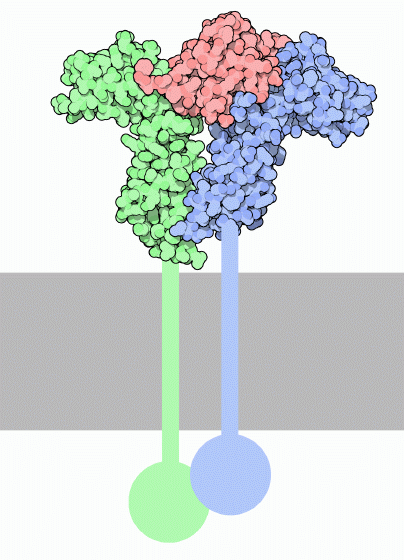|
Inhaltsübersicht | Nanomaschinen | Moleküle | Programme | Kurse | Fun | Links |
||
| > |
Growth Hormone

Growth Hormone in Action
Growth hormone (shown here in red) performs its multiple functions by binding to growth hormone receptors (shown here in blue and green) on its target organs and cells. These receptors have separate portions outside and inside the cell, connected by a helical stretch that passes through the cell membrane. Interestingly, growth hormone must bind to two receptor molecules simultaneously to mediate its function. The hormone binds on the outside of the cell, bringing two receptors together. PDB entry 3hhr, shown here, includes the extracellular portion of two receptors bound to growth hormone. When two receptors are brought together, interaction between the portions inside the cell (shown here schematically) triggers several enzymatic reactions and signaling processes that stimulate growth. Thus formation of this receptor dimer is crucial for growth hormone function. One of the major surprises from this crystal structure was the discovery that the two receptor molecules, which are structurally identical, bind to two structurally distinct sites on opposite sides of a single growth hormone molecule. As you might expect, the strength of binding at these two sites is also different.Next: Exploring the Structure
Previous: Growth Hormone
Last changed by: A.Honegger,